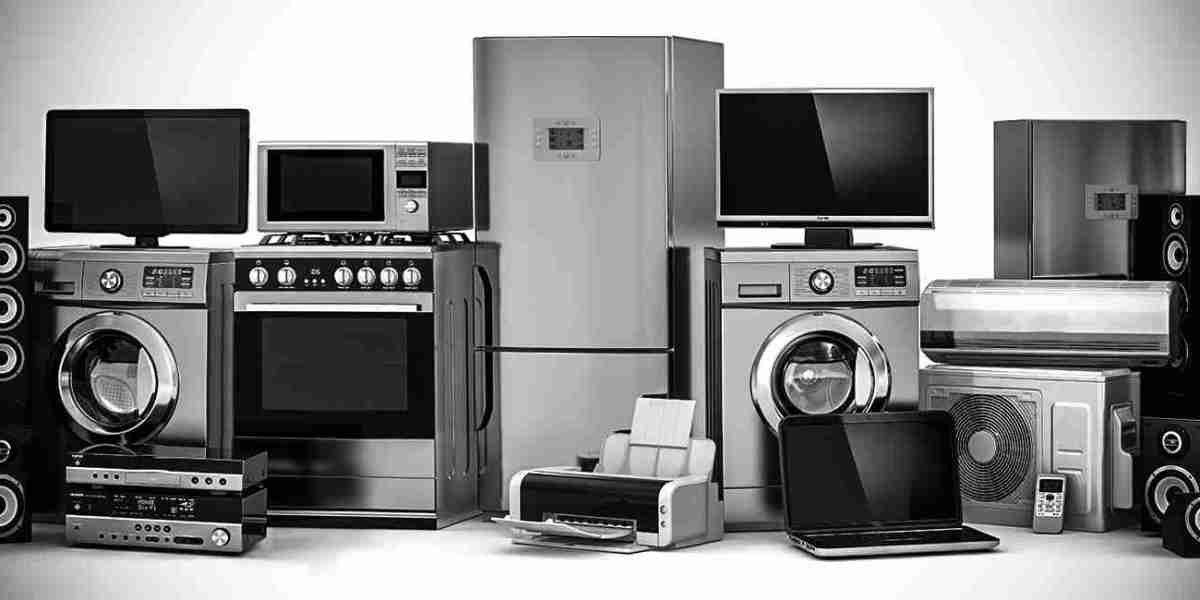The white goods market, comprising essential household appliances such as refrigerators, washing machines, and dishwashers, has been witnessing steady growth over the years. However, several hindrances challenge the market's expansion and profitability. These obstacles, ranging from economic factors to technological limitations, hinder the ability of manufacturers and businesses to fully capitalize on the market's potential. Below, we explore some key hindrances that pose challenges to the white goods market.
High Manufacturing Costs
Manufacturing white goods requires significant investment in raw materials, labor, and advanced technology. The cost of steel, copper, and other materials used in appliance production has been rising steadily, which in turn increases the overall cost of production. Moreover, the growing complexity of appliances, with integrated smart technologies and energy-efficient features, adds to the production cost. High manufacturing expenses force companies to either increase prices or absorb costs, impacting profit margins and market competitiveness.
Regulatory Challenges
The white goods market is subject to stringent regulatory frameworks imposed by governments and environmental organizations. These regulations, which often differ by region, require manufacturers to meet certain energy efficiency standards, reduce the carbon footprint, and comply with waste disposal protocols. Failure to meet these standards results in penalties or forced product recalls, which can significantly harm the brand image and financial stability of companies. Additionally, compliance with these evolving regulations necessitates continuous investment in research and development, which may be a barrier for small and medium-sized enterprises (SMEs) in the market.
Supply Chain Disruptions
The global white goods market is heavily reliant on an efficient supply chain for sourcing raw materials, manufacturing components, and distributing finished products. Disruptions in the supply chain, such as those caused by natural disasters, geopolitical tensions, or pandemics, can severely impact production and delivery timelines. The COVID-19 pandemic, for example, led to shortages in semiconductor chips, which are essential for the functioning of modern appliances. These disruptions result in delays, increased costs, and limited availability of products, ultimately affecting consumer demand and sales.
Rising Energy Prices
While energy-efficient appliances are becoming more popular, rising global energy prices remain a concern for consumers. High utility bills may deter consumers from purchasing white goods, particularly those that are not seen as energy-efficient. For manufacturers, the higher cost of electricity used in the production process can also impact profit margins, especially in regions where energy prices are volatile. In some cases, these price increases lead to the delay of purchasing decisions, as consumers may opt to defer buying large household appliances until energy prices stabilize.
Technological Limitations and Integration Issues
The increasing demand for smart white goods, equipped with features like IoT connectivity, voice command, and AI-driven functionalities, presents a challenge in terms of technological integration. Many consumers are not yet fully familiar with these advanced technologies, limiting their adoption of new appliance models. Additionally, not all households are equipped with the necessary infrastructure, such as a stable internet connection, to fully benefit from the features offered by smart appliances. Manufacturers must invest heavily in R&D and marketing to make these appliances accessible and attractive to a wider range of consumers.
Market Saturation
In developed regions, the white goods market faces saturation due to high ownership rates of essential appliances. In these markets, most households already own basic white goods, leading to slower replacement cycles. This market saturation forces companies to innovate constantly to attract new customers or upgrade their existing product lines to encourage replacements. However, in emerging economies, the challenge lies in reaching consumers who are still in the process of acquiring these basic appliances, making the pace of adoption uneven across global markets.
Environmental Concerns and Waste Management
Another significant hindrance to the white goods market is the growing concern over the environmental impact of appliance manufacturing and disposal. Many white goods have a short lifespan, and their disposal can contribute to environmental pollution, especially if they are not recycled properly. Governments and organizations are pushing for extended producer responsibility (EPR) programs, requiring manufacturers to manage the lifecycle of their products, including post-consumer waste. While this is a positive move for the environment, it places a burden on manufacturers to develop products that are easier to recycle and meet stricter waste management regulations.
Labor Shortages and Skills Gap
The production of white goods requires a skilled workforce capable of handling specialized manufacturing processes and new technological developments. However, many countries are facing labor shortages and a skills gap in manufacturing industries. As technology continues to advance, the demand for workers with expertise in robotics, AI, and automation has increased. The lack of qualified workers results in higher recruitment costs and delays in production, which can disrupt the supply of appliances in the market.
Consumer Price Sensitivity
Consumers in emerging markets are often more price-sensitive when it comes to purchasing white goods. While these consumers may desire modern and energy-efficient appliances, their limited purchasing power makes it difficult for them to afford higher-priced models. As a result, manufacturers may face challenges in designing products that cater to both cost-sensitive and premium consumers, further complicating their market strategies.














